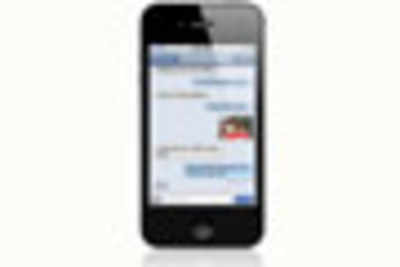This story is from December 31, 2011
Apple working on facial recognition for mobiles
Apple has a track record of taking products that work but haven't yet caught on.

Apple has a track record of taking products that work but haven't yet caught on.
SAN FRANCISCO: Apple has a track record of taking products that work but haven't yet caught on, then redesigning them with the appeal that makes them catch fire with the general buying public.
The iPad is one example and Siri is another. Now there's a new patent that suggests Apple could next tackle facial recognition. A patent application published by the US Patent and Trademark Office on December 29-and spotted by Patently Apple-describes a system for presence detection that builds on two patents Apple had already filed related to the technology, but this one has a specific take aimed at use in mobile devices.
Prior patents dealt with presence detection on MacBooks and with advanced recognition systems for use in processor-heavy home and business applications.
This one combines sophistication with a light footprint for practical, everyday , mobile use. Having used the Samsung Galaxy Nexus for a while, I'm pleased to see what Apple's new patent proposes to fix about presence detection . It describes a system in which lighting conditions, angles, and scale could all be accounted for, making face recognition usable on mobiles without strict caveats and conditions.
Apple's new method would use shortcuts to accurately determine who is using a device without requiring the heavy computational costs normally involved in such a process. It achieves this by ignoring facial biometrics and assessing the position of personal features to compensate for changes in subject orientation.
Other advantages include a built-in feature that would evaluate a person's level of attentiveness when using the system, which could help the system avoid being duped by still photographs. The new patent also describes such other neat tricks as recognizing faces among family members, friends, and co-workers , then delivering different screen savers or non-secured information to those individuals.
The iPad is one example and Siri is another. Now there's a new patent that suggests Apple could next tackle facial recognition. A patent application published by the US Patent and Trademark Office on December 29-and spotted by Patently Apple-describes a system for presence detection that builds on two patents Apple had already filed related to the technology, but this one has a specific take aimed at use in mobile devices.
Prior patents dealt with presence detection on MacBooks and with advanced recognition systems for use in processor-heavy home and business applications.
This one combines sophistication with a light footprint for practical, everyday , mobile use. Having used the Samsung Galaxy Nexus for a while, I'm pleased to see what Apple's new patent proposes to fix about presence detection . It describes a system in which lighting conditions, angles, and scale could all be accounted for, making face recognition usable on mobiles without strict caveats and conditions.
The Galaxy Nexus's ICS face-unlock feature is cute, but that's about as far as it goes: It fails to match in most cases and can be fooled with a still photograph of the subject who activated the recognition feature.
Apple's new method would use shortcuts to accurately determine who is using a device without requiring the heavy computational costs normally involved in such a process. It achieves this by ignoring facial biometrics and assessing the position of personal features to compensate for changes in subject orientation.
Other advantages include a built-in feature that would evaluate a person's level of attentiveness when using the system, which could help the system avoid being duped by still photographs. The new patent also describes such other neat tricks as recognizing faces among family members, friends, and co-workers , then delivering different screen savers or non-secured information to those individuals.
End of Article
FOLLOW US ON SOCIAL MEDIA
